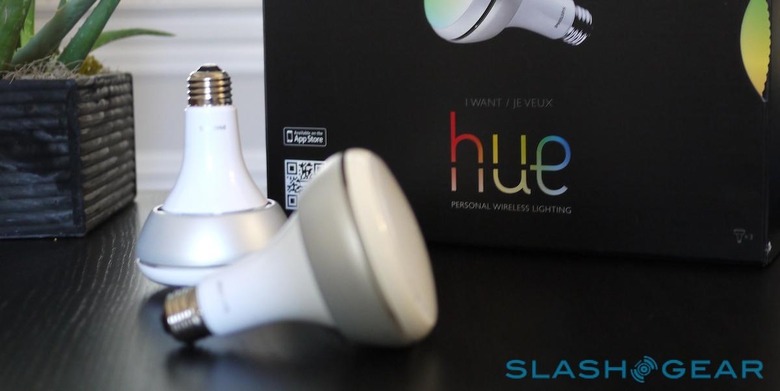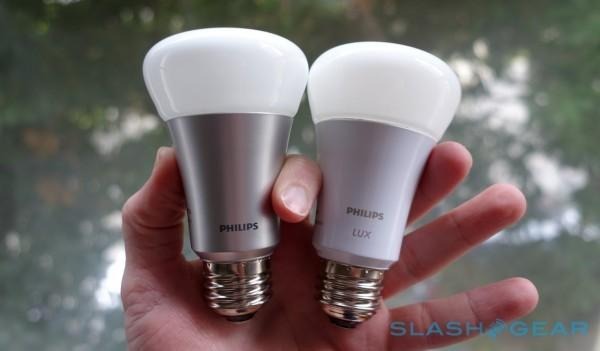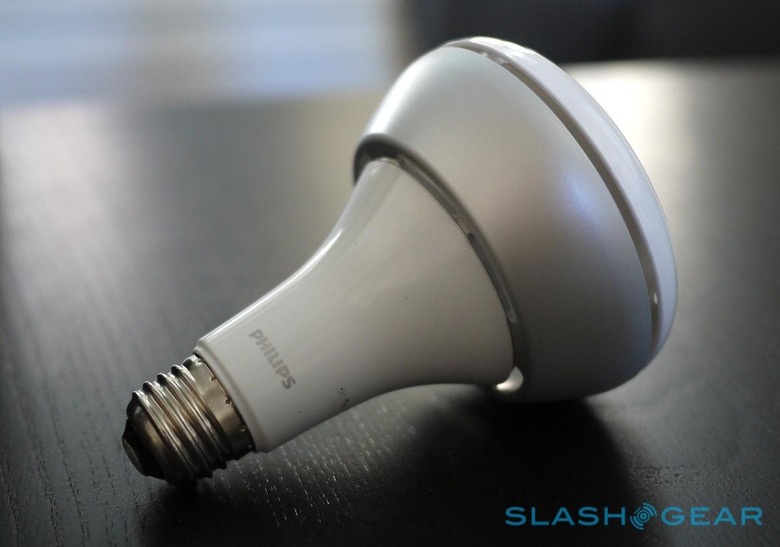With ENERGY STAR nod, Philips Hue unlocks smart bulb rebates
Philips' Hue connected bulbs have clinched coveted ENERGY STAR certification and could potentially get more affordable, the light specialist will announce this week. The certification, which Philips plans to detail at the ENERGY STAR Products Partner Meeting, makes the company's Hue platform one of the first connected lighting systems to qualify not only for ENERGY STAR's badge of approval, but utility subsidies that could make upgrading to smart bulbs considerably cheaper. I caught up with Todd Manegold, senior director of Hue product marketing, to find more.
ENERGY STAR has had guidelines around LED lighting for some time now, but it's only with the latest 2.0 version of those standards that it has included specific standby power requirements important for connected bulbs. That opens up qualification of so-called smart lighting, while Philips opting to prioritize its most popular Hue bulbs before broadening the effort across the range.
"We went down the path to start qualifying all major A19 products," Manegold explained to me ahead of this week's conference. That spans the gamut from the cheapest Hue White bulb, through Hue White Ambience and Color Ambience, while Philips also found time to include the white ambient BR30 too. And, while ENERGY STAR might be most commonly associated with, well, energy consumption, there's actually more to it than that.
In fact, there are three main areas of focus: power consumption, standby power consumption, and light distribution. Since a connected bulb is always turned on – even if it's not illuminated – so that it can react to your smartphone or hub, standby frugality takes particular priority. Indeed, for certification it has to be under 1/2 watt.

Philips' use of ZigBee helps there. The standard may predate more recent interconnect types like Thread and Bluetooth LE by many years, but the low-power mesh networking technology is still one of the most efficient. Each bulb connects to another, and eventually back to a central hub plugged into your router.
The biggest issue, though, was one of perception Manegold explained. To qualify for ENERGY STAR certification, the light distribution from an LED bulb has to be equivalent to that of a traditional incandescent: in short, when behind a shade, it must fire light in all the same directions that an old-school bulb would, rather than leave a noticeable cut-off line. "That's not an insignificant task to achieve," according to Manegold.
LEDs shoot light in one direction, but to mimic the distribution from an incandescent and meet the ENERGY STAR guidelines, an LED bulb's beam angle needs to be at least 220-degrees. That means light has to come below the meeting point of the LED's heatsink and optics.The result is a bulb enclosure which doesn't just include a bunch of LEDs, but some fairly complex light guides too.
"We had to do some iterative things to our products," Manegold said. "We had to make sure the optics were in lace to not only maintain uniformity on color quality ... but also make sure the uniformity was on ENERGY STAR requirements. And we designed our products from an energy perspective on the understanding that the ENERGY STAR requirements would come into play."

Although last week's vast internet downtime, blamed on poorly-secured Internet of Things devices co-opted into a botnet, might suggest otherwise, Manegold insists that the tricker aspect of connected lighting is the light part, not the connectivity. "If you're a tech company with familiarity with software and connected APIs, that's probably quite easy," he argues. "At least from our assessment, we're one of the few that can actually qualify ENERGY STAR at all three tiers."
There's more to the news than a badge of honor for Philips, mind. ENERGY STAR certification now means the Hue bulbs are eligible for energy company incentives, and that means a cheaper way to get smart lighting. According to Manegold, the savings could be considerable.
"For consumer benefits, one is the simple endorsement of a quality product," he told me. "But it also allows utilities to step into the connected lighting world and drive adoption on a greater rate." By exactly how much an individual bulb might drop will depend on geographical location, energy provider, and retailer, but utility firms in the north west and north east of the US are already pushing anything from $2 to $10 off.

The rebates are instant and at the point of sale, too, which means no pesky forms to fill in and mail out. For Hue white, for instance, you would simply see a $2-3 cut on what would ordinarily be a $15 bulb. It's not altruism from the energy company, mind, but a recognition that there are big potential pay-offs for encouraging the switch to smart lighting.
NOW READ: Philips Hue motion sensor review
"One of the assumptions is that if you have connected lighting, not only are they based on LED – one of the most efficient types of lighting – but when they're connected you reduce consumption even further," Manegold explained to me. That could include automatically adjusting lighting depending on ambient light, avoiding unnecessary over-illumination, or tweaking the settings according to peak and off-peak energy periods. Research Philips has cited earlier even suggested that, by making the lighting temperature warmer, residents delayed turning up their physical thermostat.
It could well be the shove connected lighting needs to take it from being a geek's plaything to having true mainstream appeal. Though predictions for the IoT envisage big things for the segment – and companies like Apple work with builders to bake their smart home platform of choice into the underlying architecture of the house – it's been fairly hard to make a compelling argument for technologies that have, so far, been considered frivolous. ENERGY STAR certification isn't the entire answer to that for Hue, but if that means it gets cheaper to extend your smart lighting system into another room or hallway, and spend a few dollars less every quarter on your electricity bill, all the better.
MORE ENERGY STAR
